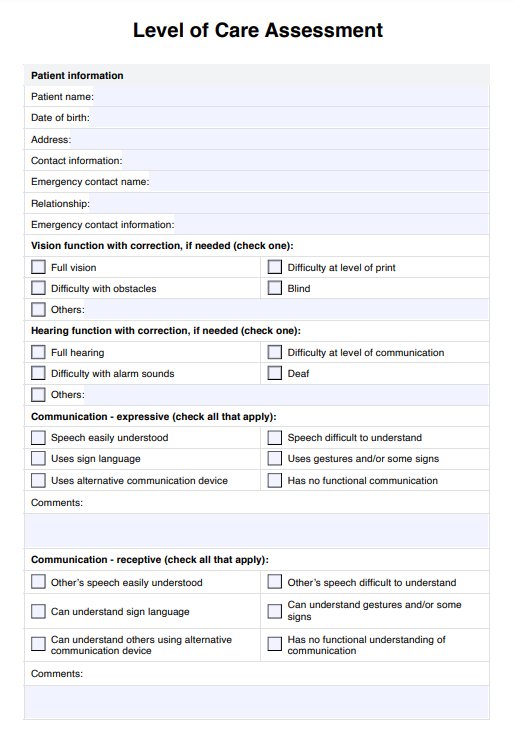The Level of Care Assessment in nursing is a systematic evaluation that determines patients' specific healthcare needs based on their medical conditions and daily living requirements. This assessment helps nursing staff develop tailored care plans to ensure patients receive appropriate support and resources throughout their recovery or management process.

Level of Care Assessment
Discover what a Level of Care Assessment entails and access Carepatron's free PDF download with an example to help you better understand the process.
Level of Care Assessment Template
Commonly asked questions
The term "level of care" refers to the degree of medical support and assistance a patient requires based on their health status and functional abilities. It encompasses various care settings, ranging from independent living to skilled nursing facilities, tailored to meet individuals' unique needs.
Patients' level of care is determined by assessing their health conditions, functional capabilities, and personal support needs. Factors such as medical history, the complexity of health issues, and the ability to perform daily activities play a critical role in this determination.
EHR and practice management software
Get started for free
*No credit card required
Free
$0/usd
Unlimited clients
Telehealth
1GB of storage
Client portal text
Automated billing and online payments











